The Antiquities of St. Hubertus
The following is a description of a number of artifacts, called the “antiquities”, which were assembled by Austrian monarchies. IOSH has undertaken the responsibility for their preservation and maintenance. IOSH has conducted and commissioned research and investigation as to their origins and their prior ownership, but does not vouch for their authenticity. Nothing contained herein implies empathy with previous owners or their militaristic actions.
Wilhelm II, eldest grandson of Queen Victoria of England, became Emperor of Germany and King of Prussia in 1888. He was an avid hunter and he maintained several large game preserves in his kingdom. In 1892, Wilhelm built Rominten, the quintessential hunting castle, or jagdschloss in Prussia. In 1893, he commissioned the construction there of a stave-style chapel dedicated to St. Hubertus, the patron saint of hunters. This chapel was decorated with paintings and other ornamentation depicting St. Hubertus, among which, it is believed, were the hand-carved plaque depicting the miraculous conversion of Hubert, as well as the historic Cross of St. Hubertus, both further described below.
Wilhelm hosted royal hunts at Rominten and his hunting parties often included his cousin, Emperor Franz Joseph of Austria. These men and other royal guests harvested many extraordinary trophies there, especially the great red stag, which, as legend has it, had also been a favorite quarry of Hubert in the forests of the Ardennes in the late 700’s AD.
Elaborate ceremony was observed in the field regarding the game taken at Rominten. Antlers were mounted on ornate plaques, many beautifully hand-carved by artisans using Linwood and other hardwoods from the forests of the area. Permanent inscriptions were often made in calligraphy on the mounts, memorializing the location at which the trophy was taken and the date of the hunt. Some of the magnificent trophies were adorned with medals and pendants representing the military affiliation of the entourage accompanying Wilhelm on the hunt, or the title or rank of a guest. In the case of trophies taken by Wilhelm himself or other royalty, such as his cousin, Austrian Emperor Franz Joseph, a royal cipher, made of gold, was sometimes affixed to the mount.
During the late 1800’s and early 1900’s, Wilhelm accumulated and displayed an extensive collection of these trophies, as well as other memorabilia and antiques, at Rominten. Upon his abdication in 1918, Wilhelm was allowed by the Weimar Republic to remove 52 railway cars containing his possessions, including this collection of hunting trophies. The collection was first taken to the castle of his cousin, Queen Wilhelmina of the Netherlands, and then to a home he acquired in Doorn, where Wilhelm lived for the rest of his life. After Wilhelm’s death, the collection was largely preserved by his family and heirs, and ultimately transported to America.
A significant portion of this collection was acquired from heirs of Wilhelm by Mr. Brad Ham of Colorado, an artist and avid hunter, who, in his travels in Western Europe, had become aware of the story of St. Hubertus and the collection, and he began to acquire pieces therefrom. The smaller collection subsequently came under the protection and care of another hunter and conservationist, Mr. Gentry Beach of Dallas, Texas. There, in 2014, it came to the attention of IOSH Ordensbrothers Mark Connally and Tibaut Bowman, who proposed the acquisition by IOSH of critical pieces of the collection, especially those directly related to St. Hubertus. Inspections and negotiations ensued. With the involvement of then-Central Prior John Poindexter, and under the authority of then-Grand Prior of the USA, BG Jack Nicholson, ret., who also viewed the collection, several pieces significant to St. Hubertus were acquired.
Among the more important items is the 13 foot tall Cross of St. Hubertus, that is believed to have resided in the Chapel of St. Hubertus at Rominten, with an older pedestal and crucifix commissioned by King Frederick III, Wilhelm’s grandfather.
Two additional trophies were also acquired, being designated the Chapel Mounts. These magnificent trophies are also believed to have hung in the St. Hubertus Chapel at Rominten. These notable stags were harvested by King Frederick III of Prussia after his coronation in 1792 and each has his golden cipher affixed to the skull. They are mounted on exquisitely and intricately carved wooden plaques with the cross of St. Hubertus between the antlers.
In addition to these acquisitions, Mr. Ham gave two priceless gifts to IOSH USA. One is an exceptionally skillfully carved wooden plaque depicting the miraculous conversion of St. Hubertus, also believed to have come from the Chapel of St. Hubertus at Rominten.
The second gift, and the most important piece, is the Relic of St. Hubertus. This relic is a fragment of the finger bone of St. Hubertus, taken at the time of his exhumation in 854AD. The bone fragment is mounted by gum adhesive to a star cloth of gold and preserved in a silver reliquary with a crystal face. The reliquary is sealed and secured on the back by four red silk threads held by the red wax seal of the Catholic Bishop in St. Hubertus’ diocese at Liege.
The Relic of St. Hubertus is accompanied by a Latin authentication verifying its authenticity. The Authentication was signed and sealed by the Bishop in 1845. The Relic of St. Hubertus is no longer housed in a wooden tryptic; it is housed today in a more portable monstrance and moves around transported personally by the Grand Master for festivities of the Order worldwide.
The IOSH commissioned a translation of the Authentication and research to verify the provenance of the Relic. Cases were specially constructed for the preservation and display of these priceless antiquities. Larger and secure wooden cases were also fabricated to hold the massive trophy mounts and the large Cross of St. Hubertus, suitable for the preservation and storage of these antiquities and for their safe transport to IOSH Investitures and other ceremonies. These historical antiquities were first ceremoniously presented to the general membership at the March, 2015 IOSH Investiture at St. Louis Cathedral in New Orleans, Louisiana. They remained on display during the weekend in New Orleans and were next displayed throughout the 2016 IOSH Investiture in Charleston, South Carolina.
Not only are these artifacts of historical and artistic importance, but they provide a direct connection to our past. The IOSH was founded in the 17th century in the von Habsburg domains of central Europe and it flourished during the 400 year Hohenzollern dynasty in Germany. These marvelous pieces, and especially the Relic of St. Hubertus and the Cross of St. Hubertus, are emblematic of that era and constitute our perpetual and direct link to that time, and to St. Hubertus himself. IOSH has taken on the responsibility to be the permanent custodian of a meaningful element of our 1300 year hunting and conservation heritage.
Following is a collection of photographs of the Relic, the Cross, and other IOSH antiquities.


The Trophies
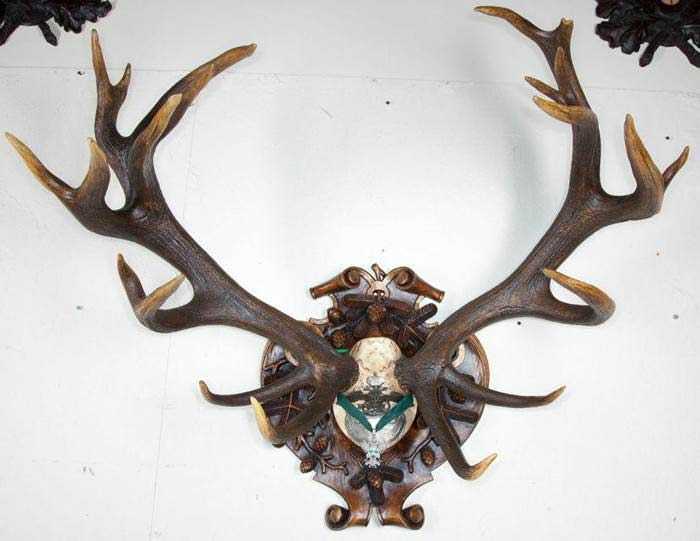

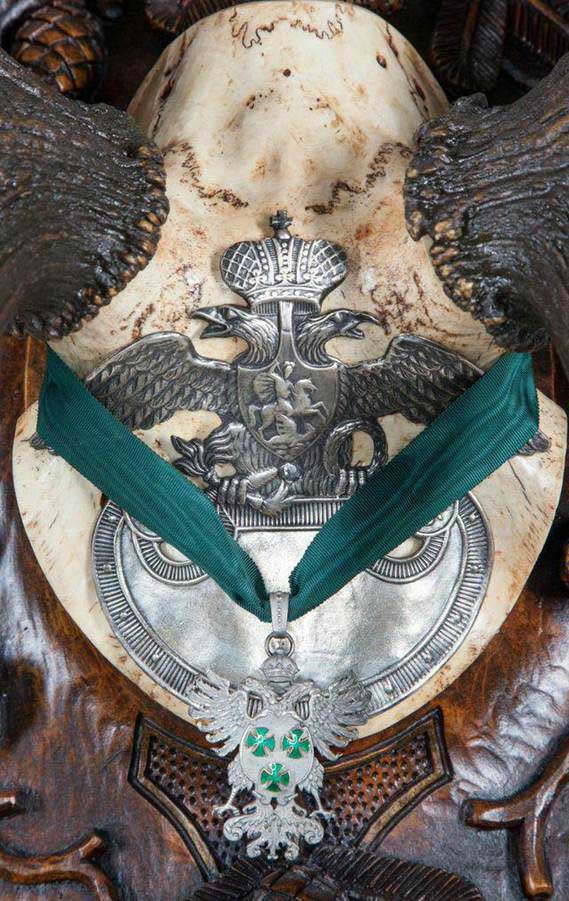

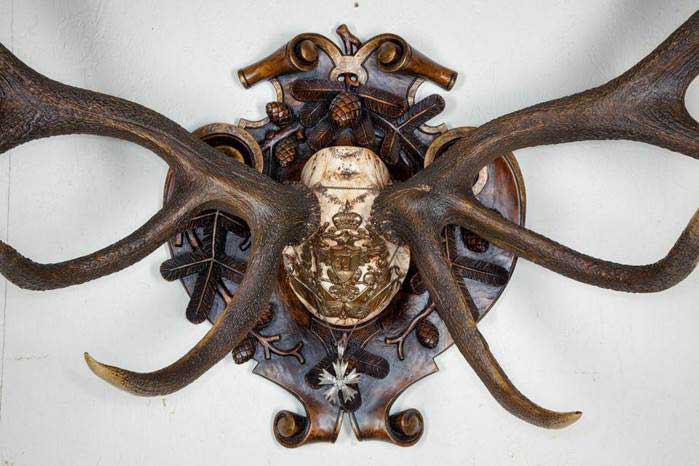
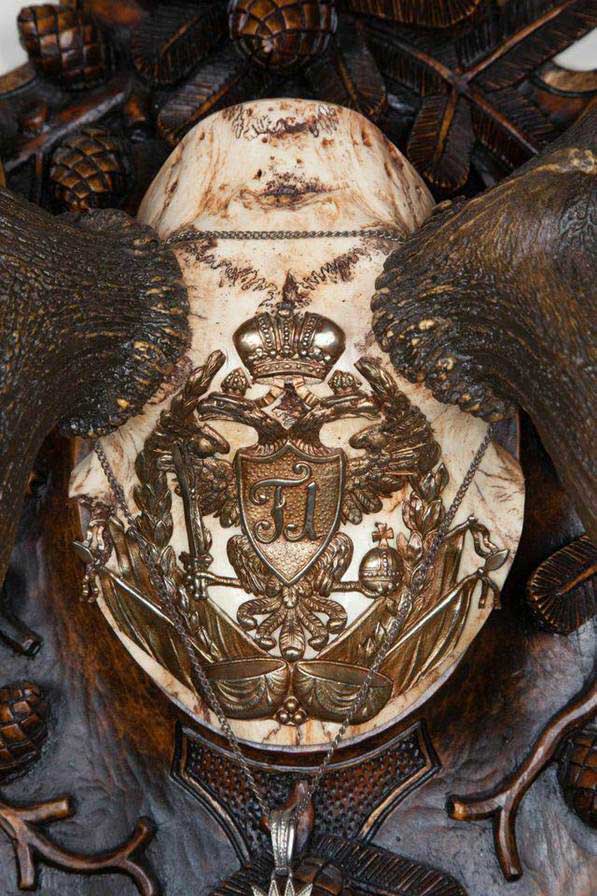

The Relic of Saint Hubertus
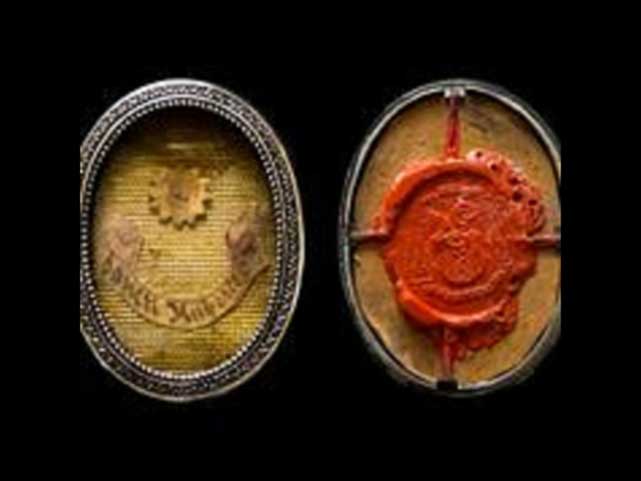
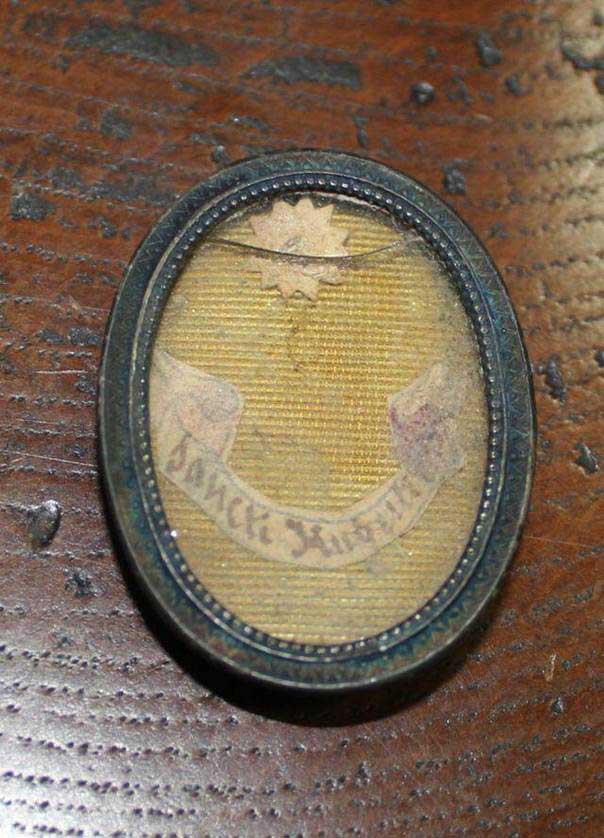
FRONT
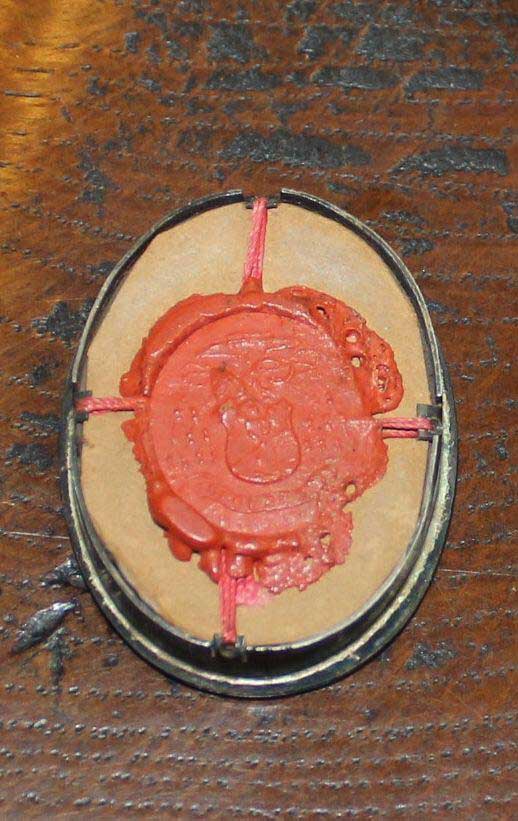
REVERSE SIDE
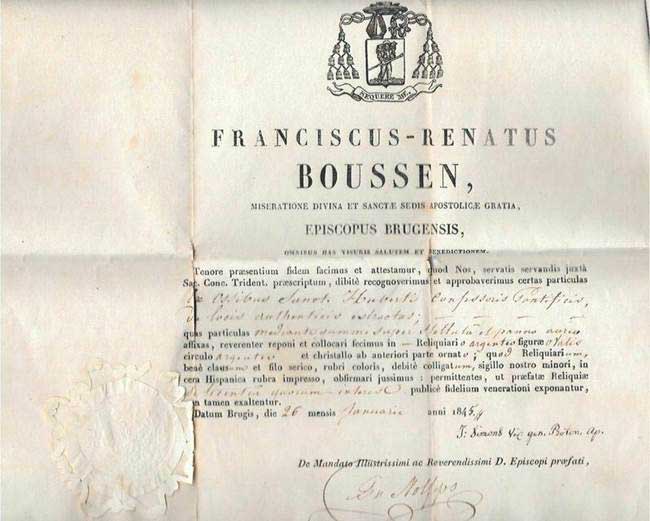
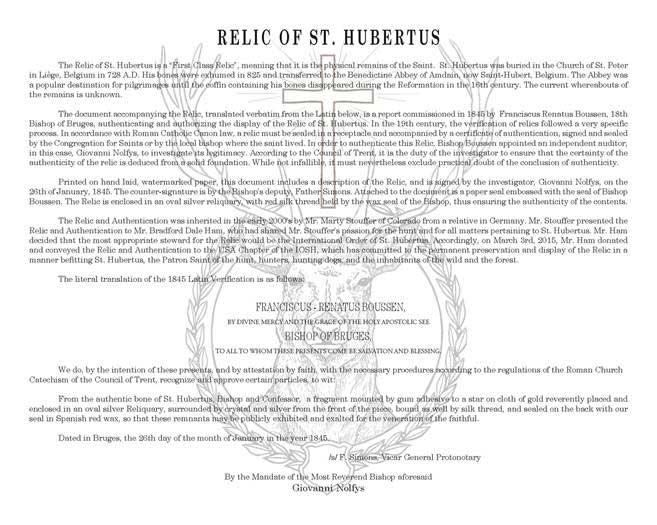
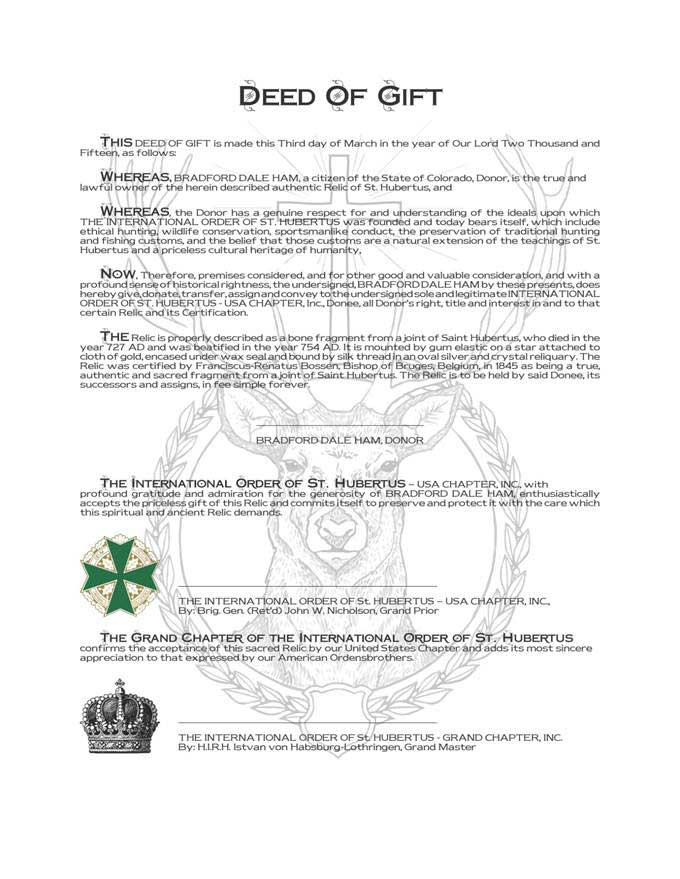

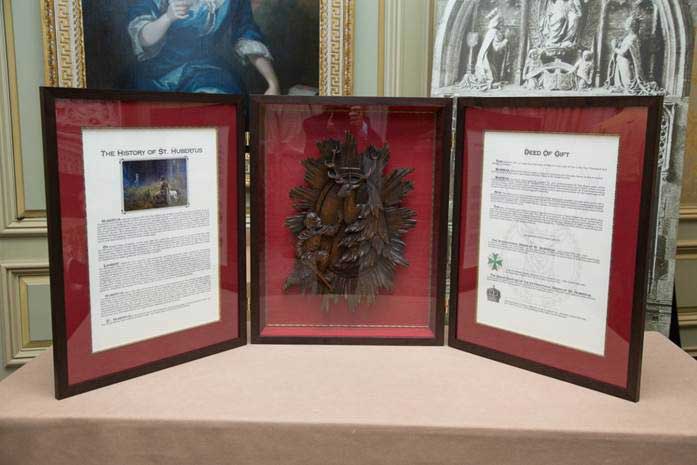
Additional images relative to the St. Hubertus Antiquities may be viewed by clicking the button below.


